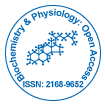Unsere Gruppe organisiert über 3000 globale Konferenzreihen Jährliche Veranstaltungen in den USA, Europa und anderen Ländern. Asien mit Unterstützung von 1000 weiteren wissenschaftlichen Gesellschaften und veröffentlicht über 700 Open Access Zeitschriften, die über 50.000 bedeutende Persönlichkeiten und renommierte Wissenschaftler als Redaktionsmitglieder enthalten.
Open-Access-Zeitschriften gewinnen mehr Leser und Zitierungen
700 Zeitschriften und 15.000.000 Leser Jede Zeitschrift erhält mehr als 25.000 Leser
Indiziert in
- CAS-Quellenindex (CASSI)
- Index Copernicus
- Google Scholar
- Sherpa Romeo
- Öffnen Sie das J-Tor
- Genamics JournalSeek
- Akademische Schlüssel
- JournalTOCs
- Ulrichs Zeitschriftenverzeichnis
- Elektronische Zeitschriftenbibliothek
- RefSeek
- Hamdard-Universität
- EBSCO AZ
- OCLC – WorldCat
- Gelehrter
- SWB Online-Katalog
- Virtuelle Bibliothek für Biologie (vifabio)
- Publons
- Euro-Pub
- ICMJE
Nützliche Links
Open-Access-Zeitschriften
Teile diese Seite
Abstrakt
Comparative Influence of Brassinosteroids Correspondents (24-Epibl and 28-Homobl) on the Morpho-physiological Constraints of Brassica oleracea (Cabbage, Cauliflower and Broccoli)
Spall Kaur Nirmal K, Geetika Sirhindi and Sandeep Kumar
Influence of brassinosteroid correspondent viz. 24-epiBL and 28-homoBL were studied on morpho-physiological constraints of 10th DAS of Brassica oleracea viz. (cabbage, cauliflower and broccoli). Seed priming treatments with various concentrations of 24-epiBL and 28-homoBL (10–6 M, 10–9 M and 10–12 M) were applied and observed that BRs treatments encourages seed germination significantly as compared to untreated seeds on 3 and 4th DAS. Seed priming treatments with above mention concentrations of 24-epiBL and 28-homoBL exaggerated the morphology of 10th seedlings of cabbage, cauliflower and broccoli on various extents, as root length was found to be inhibited by all treatments in all the varieties but shoot length enhanced significantly in all varieties with all the treatments. Results also suggested that BRs works best on optimal concentration, i.e., 10–9 M in 24-epiBL. Photosynthetic pigments i.e. total chlorophyll, chlorophyll a and b, carotenoids were also influenced by the treatments of 24-epiBL and/or 28-homoBL but the influence was very much dose dependent and optimum dose was varying variety to variety. As there is a direct correlation between the photosynthetic pigment and carbohydrate synthesis so study also suggest that the accumulation of carbohydrate also ameliorated after seed priming treatments. In conclusion it was found that BRs works in dose dependent manner and optimum dose varying variety to variety. Broccoli responded most efficient to BRs treatments and 24-epiBL has more potential to promote morpho-physiological parameters of Brassica oleracea varieties.
Zeitschriften nach Themen
- Allgemeine Wissenschaft
- Biochemie
- Chemie
- Genetik und Molekularbiologie
- Geologie und Geowissenschaften
- Immunologie und Mikrobiologie
- Klinische Wissenschaften
- Krankenpflege und Gesundheitsfürsorge
- Landwirtschaft und Aquakultur
- Lebensmittel & Ernährung
- Maschinenbau
- Materialwissenschaften
- Medizinische Wissenschaften
- Pharmazeutische Wissenschaften
- Physik
- Sozial- und Politikwissenschaften
- Umweltwissenschaften
- Veterinärwissenschaften
Klinische und medizinische Fachzeitschriften
- Anästhesiologie
- Augenheilkunde
- Betrieb
- Dermatologie
- Diabetes und Endokrinologie
- Gastroenterologie
- Genetik
- Gesundheitspflege
- Immunologie
- Infektionskrankheiten
- Kardiologie
- Klinische Forschung
- Medizin
- Mikrobiologie
- Molekularbiologie
- Neurologie
- Onkologie
- Pädiatrie
- Pathologie
- Pflege
- Toxikologie
- Zahnheilkunde

 English
English  Spanish
Spanish  Chinese
Chinese  Russian
Russian  French
French  Japanese
Japanese  Portuguese
Portuguese  Hindi
Hindi